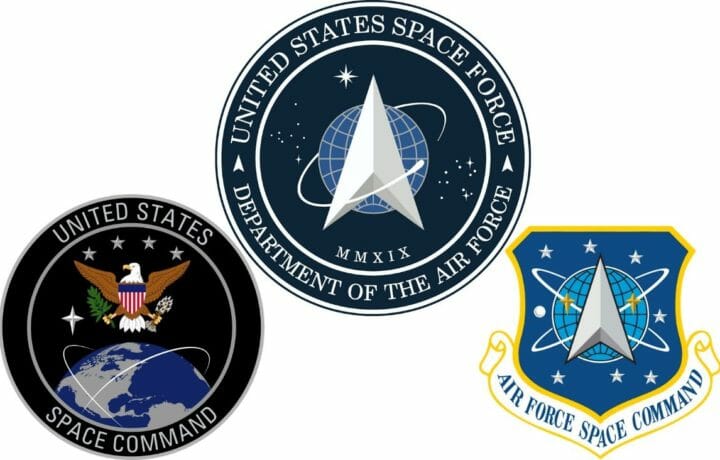Friday the White House officially unveiled the seal of the new U.S. Space Force, the first new military service in more than 70 years – following the establishment of the U.S. Air Force in 1947.
“After consultation with our Great Military Leaders, designers, and others, I am pleased to present the new logo for the United States Space Force, the Sixth Branch of our Magnificent Military!” President Trump tweeted.
The seal is essentially an update of the United States Air Force Space Command seal, which features a “delta symbol” over a globe with longitude and latitude grid lines and stars in the background. However, detractors online quickly noted that the United States Space Force seal also closely resembled the fictional Starfleet Command seal from the Star Trek TV and movie series.
Even George Takei, who starred in the original TV series in the late 1960s and in several of the films, responded on Twitter noting, “Ahem. We are expecting royalties from this…” Of course Takei’s comments have largely been seen as tongue-in-cheek, and he followed up with several fictional designs that he noted, “didn’t make the cut.”
However, other detractors also quickly jumped on the bandwagon and noted the similarities of the design between that of the Space Force seal and that of Starfleet, with Fast Company suggesting that it was “pretty much a carbon copy of the logo for Starfleet Command,” while it “copy-and-pasted the star patterns from NASA’s logo.”
What many might not realize is that the Starfleet logo likely was based on the symbol used for the early U.S. Army Air Forces, which used the delta symbol, as well as early Air Force space organization emblems dating back to 1961.
In a statement, a spokesperson for the U.S. Space Force said the seal “pays tribute to the newest armed service that organizes, trains, and equips space forces in order to protect U.S. and allied interests in space and to provide space capabilities to the joint forces. The spokesperson also responded to the criticism as well as the similarities for the Star Trek design, noting that the seal “honors the Department of the Air Force’s proud history.”
Moreover, the round NASA insignia (known as “the meatball”) has long featured a red delta symbol and stars and was approved by President Dwight D. Eisenhower in 1959 and slightly modified by President John F. Kennedy in 1961, so it clearly predated Star Trek, which didn’t make its debut until 1966. That symbol also apparently influenced the Starfleet design, which isn’t really that old.
According to the Star Trek fan site Ex-Astris Scientia, the full Starfleet seal actually never appeared in the original series and was only introduced in the fourth season of the subsequent series, Star Trek: Deep Space Nine in 1996. Michael Okuda, graphic designer and lead designer for Star Trek, was quoted as saying, “the symbol was intended to be somewhat reminiscent of the NASA emblem!”
The seal wasn’t the only Space Force item to be addressed with some controversy and a bit of mockery. Online a black camouflage uniform with white “stars” was reportedly “leaked” online, suggesting that this was the new Space Force uniform – but that was of course a hoax.
In actuality, the new branch of service will rely on the Operational Camouflage Pattern (OCP) uniform that is currently used by the U.S. Army and U.S. Air Force. It will feature a name tape that reads “U.S. Space Force,” while the U.S. Space Command patch will be worn on the left sleeve. Above the patch will be worn the full-color American flag patch – a departure from the flags that soldiers and airmen typically wear on the right shoulder of the OCP uniform.
There are still a few unanswered questions, including the rank structure, the full system of uniforms, or notably, what to call members of the new force.
“We’ve got some steps to go through,” said Pentagon spokesperson Jonathan Hoffman during a briefly last week, and he promised “an update of Space Force-related issue in the near future.”



